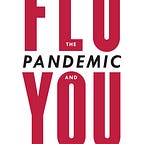One Thing We Know as Frontline Doctors: Pandemics End
Amid uncertainty, it’s reassuring to consider the bigger picture
The first deadly viral outbreak of the 21st century was SARS, which infected 8,437 people worldwide, including 375 in Toronto, Canada. After the crisis was brought under control, doctors who beat it looked ahead to the future pandemics they knew would be coming — and offered this guide to living through it.
 Within days of the first cases of SARS arriving in Toronto in February 2003, our vibrant, cosmopolitan city was turned upside down. Hospitals, the places people usually turn to when seeking relief, suddenly became places that many people dearly wished to avoid.
Within days of the first cases of SARS arriving in Toronto in February 2003, our vibrant, cosmopolitan city was turned upside down. Hospitals, the places people usually turn to when seeking relief, suddenly became places that many people dearly wished to avoid.
Some who demonstrated signs and symptoms of SARS arrived in the hospital desperate for help, only to discover that they probably had nothing more than a cold. In other cases, people who did have SARS but who were terrified of the events happening around them tried to avoid any kind of health care. Media reports alternately frightened and reassured.
Meanwhile, the doors of the hospitals had come to resemble the security checkpoints of a military facility. Access was controlled, and entry was limited to certain points for patients and others for staff members. At our hospital, the patient entry point was through a…
